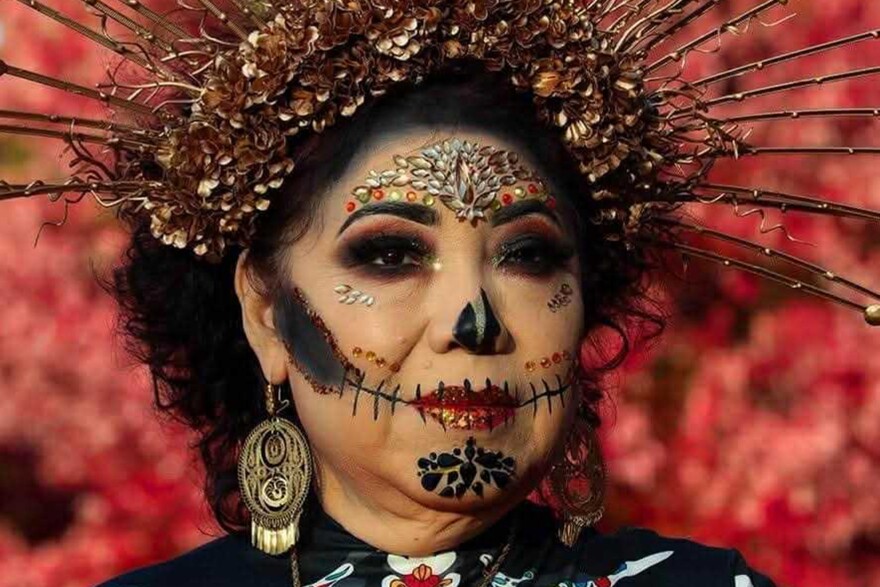On Nov. 1-2, many streets in Mexico are filled with people singing, dancing and mourning. The juxtaposition of sadness and celebration that comes with Día de Muertos — or Day of the Dead — may seem strange to some. But for St. Louisans Leticia Seitz and Carmen García, it is an integral part of their culture.
“It's not something that we can be scared [of], or anything like that, it's more celebrating life,” said Seitz, historian and host of the "Latinos en Axión STL" podcast. “In Mexico, everybody's in fiesta right now. [There’s] a lot of cempasúchil (Aztec marigold), the rituals, the pictures.”
During Día de Muertos, placing marigolds on altars and in decorations is customary. Their bright color and strong aroma are said to help guide the spirits of loved ones home. Families also create an “ofrenda” or “offering” in their home.
Over time, the word “ofrenda” has grown to include the entire altar set up by the living. Most families begin the preparations well in advance as the days leading up to Día de Muertos hold significance as well.

“There's certain dates associated with different passings, we start celebrating on the 27th of October to celebrate pets,” actress Carmen García explained. “My dad just passed earlier this year, so we've been preparing our ofrenda for him as well. We put out fruit, candies. … We also try to prepare favorite dishes of our loved ones. I also put a little bottle of tequila here and there.”
Joy, even through tears and pain of loss, is what Día de Muertos festivities embody. They also encourage a sense of community and togetherness. That togetherness extends to nonrelatives as well.
“I have a memory [from when] I went to Pátzcuaro in Michoacán a couple years ago, and [there] was a guy who was taking care of the grave,” Seitz said. “I asked him, ‘This is your family?’ He said, ‘No, somebody from the United States who cannot come to Mexico. He paid me to bring food to the family here.’ I asked, ‘May I stay with you and eat with you?’ And he said, ‘Yes, after we pray.’”
Día de Muertos serves as a way to keep the stories of ancestors alive. This year, STLPR is putting up its first digital ofrenda featuring listener reflections. They include submissions from people who are mourning relatives they never got to meet.
“One person in particular was remembering someone who was enslaved in their family,” STLPR engagement producer Paola Rodriguez said. “[She] was hoping that having an ofrenda for them would help guide her to her ancestors on how to better move forward.”
From the outside looking in, Día de Muertos may seem macabre with its calaveras de azúcar (“sugar skulls”) and pan de muerto (“bread of the dead”). But they represent the essence of the holiday – which is bright, colorful, joyous and mournful.

“You start with joy and love, but still in the moment, building the altaro (altar), the ofrenda. … I don't know what happen[s], but you cry,” Seitz said. “You cry because [of] the memories, because [of] the feeling, because you miss that person. So that's why it's important. And we invite everybody to know more about Dia de los Muertos and live the experience.”
To learn what distinguishes Día de Muertos from Halloween historically, how to respectfully celebrate the holiday and why STLPR has created a digital community ofrenda, listen to St. Louis on the Air on Apple Podcasts, Spotify, or YouTube or click the play button below.
“St. Louis on the Air” brings you the stories of St. Louis and the people who live, work and create in our region. The show is produced by Miya Norfleet, Emily Woodbury, Danny Wicentowski, Elaine Cha and Alex Heuer. Darrious Varner is our production assistant. The audio engineer is Aaron Doerr.







